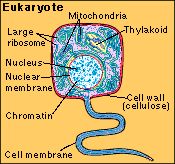The units of selection - Does selection ever favor cells over the rest of the body?

The cellular level
In organisms like ourselves, a new individual develops from an initial single-cell stage; and that single cell derives from a special cell line, the germ line, in its parents. Most cell lines (the soma) inevitably die when the organism dies; reproduction is concentrated in a separate germ line of cells. Any somatic cell line comes to an end with the organism's death. For this reason, cell selection is not important in species like ourselves.
We tend to think of this as usual because vertebrates, as well as the more familiar invertebrates like arthropods, develop in this manner. Many taxa have the capacity for somatic embryogenesis - a new generation may be formed from cells other than those in specialized reproductive organs. The most striking examples are from plants. Steward, for instance, in a famous experiment in the 1950s, grew new carrots from single phloem cells taken from the root of an adult plant.
In a species in which new offspring can develop from more than one cell lineage, selection between cell lines becomes possible. If a mutation arises which increases the cell's rate of reproduction, the cell line will cancerously proliferate at the expense of other cell lines in the organism. Now in species such as ours, that cell line will die when the organism dies; but if any cell line stands a chance of producing offspring, the mutant cell line would increase its chance of being in an offspring.
Explained in this way, the process would be detrimental to the organism; but it could be more useful. It is possible that in plants this kind of somatic selection increases the ability of the individual to adapt to local conditions.
Figure: all animals and plants are eukaryotic: they have complex cells with a separate nucleus. Within the nucleus the DNA is contained, providing enough information for some plant species to be grown from a single cell taken from another plant.
| Next |



